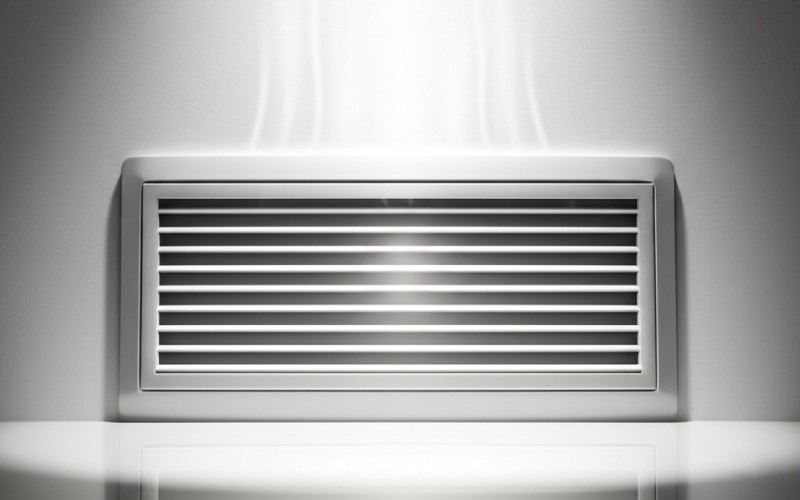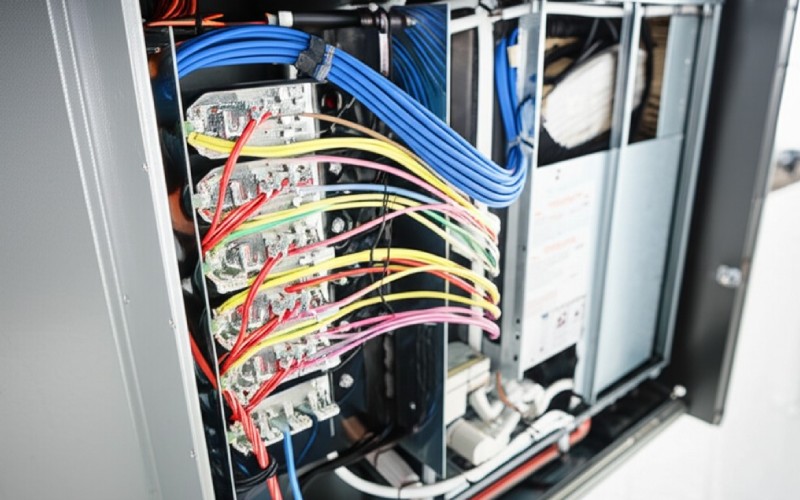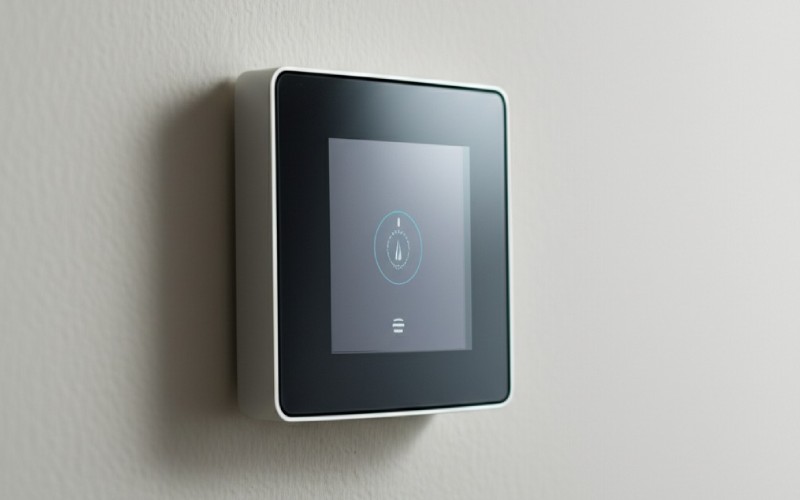Let Sino's Lamination Stacks Empower Your Project!
To speed up your project, you can label Lamination Stacks with details such as tolerance, material, surface finish, whether or not oxidized insulation is required, quantity, and more.

There is a lot of changes in heating and cooling innovation for many years. Among the biggest has actually remained in motor technology . You’ve obtained your older PSC motor and the newer ECM motor . Recognizing the difference between PSC motors vs ECM motors can help you save money and be a lot more comfy. We’ll take a look at energy performance , air movement , and even for how long they might last.
A PSC motor , or Permanent Split Capacitor motor, is a sort of AC motor. It’s rather basic in its motor style . These motors run by using a capacitor to help start the rotor spinning and to maintain it running. The capacitor creates a phase shift in the electrical current, which helps produce the required magnetic field to turn the rotor . The thing regarding a PSC motor is that it’s developed to go for a constant speed. Once it’s on, it’s basically addressing one set RPM (revolutions per min). Think of it like a light button– it’s either on or off. There isn’t much middle ground with a typical PSC motor . This simpleness made them economical to make and rather dependable for years in great deals of AC applications . The PSC fan in your old air handler most likely used this very motor modern technology . Several PSC motors run for years easily, but they aren’t one of the most efficient.
After that came the ECM motor . Now, ECM means Electronically Commutated Motor . This is a huge step up in motor modern technology. An ECM motor is a kind of brushless DC motor. Unlike PSC motors , which utilize AC power directly in a simple means, an ECM motor has integrated electronic devices. These digital controls take the incoming AC power and convert it to DC power to run the motor. This is where the “electronically commutated” part can be found. The commutation, which is just how the magnetic field is switched over to maintain the rotor turning, is managed by wise electronics rather than mechanical brushes (like in some older DC electric motors) or the simpler configuration in a PSC motor . This ECM innovation allows for a lot more specific control over the motor speed and torque . It’s a more complicated motor design , but as we’ll see, that intricacy brings a lot of benefits, particularly in modern HVAC systems .
PSC motors are mainly constant speed devices. They may have a few speed “taps” that can be set at setup, but they don’t proactively change their speed while running. ECM motors , on the other hand, are popular for their variable speed capabilities. They can change their motor speed up or down based on the needs of the cooling and heating system . One more large distinction is efficiency. PSC motors depend on that particular capacitor and a simpler style, which isn’t always one of the most energy-efficient. ECMs , with their brushless design and smart electronic devices, are better at transforming electrical input right into useful work, meaning much less wasted power. This is a bottom line when we speak about electric motors vs older tech. The choice in between PSC motors vs. ECM motors typically boils down to upfront cost versus lasting savings and performance. ECMs usually have a higher initial cost .
This is where ECMs actually radiate, in my experience. Due to the fact that an ECM motor can readjust its speed, it can be programmed to keep consistent airflow or continuous torque . Let me explain. Consistent air movement implies that even if your air filter is a little bit dirty and produces more resistance (what we call static pressure), the ECM motor can sense this and accelerate to press the same quantity of air through your air ducts. This brings about much more constant temperature levels and much better comfort. A PSC motor would certainly just slow down, minimizing air flow . Continuous torque is one more feature ECMs provide . This suggests the ECM motor can preserve its transforming force even if the load changes. This works in numerous applications where variable needs are positioned on the blower . The capability of ECMs to specifically take care of speed and torque is a game-changer for system efficiency in a cooling and heating system . This causes better delivery of heating or cooling.

Oh, definitely. Because an ECM motor can adjust its speed and is naturally more effective in its motor style , it uses substantially less power than a PSC motor . Think about it: a PSC motor in your heating system or air trainer frequently goes for full blast or not in all. An ECM motor can perform at an extremely low RPM when just a little airflow is needed, sipping power. This suggests lower power bills. The power savings can be substantial over the lifespan of the HVAC system . While the ECM motor itself might have a higher initial cost , the reduced energy consumption typically pays back that difference gradually. We’re speaking about ECMs using as little as 25% of the energy of a PSC motor in some circumstances, especially in continuous fan operation. That’s a lot of conserved watt -hours! This boosted energy effectiveness is a big and also.
PSC motors have extremely restricted speed control . Usually, they are single-speed, or they could have 2 or 3 repaired speeds selected by electrical wiring. They can’t really change the speed on the fly. To vary the speed of single-phase AC motors like PSCs significantly, you would certainly require something facility like variable frequency drives ( VFDs ), which are not generally developed right into the PSC motor itself for property HVAC . ECMs , however, have advanced speed control constructed right in. They make use of inputs to vary their RPM dynamically. This allows them to go for precisely the speed required for the current load conditions . Whether it’s a mild airflow for continuous flow or an effective blast to rapidly cool an area, the ECM motor can adjust its speed perfectly. This “variable speed” ability is a characteristic of ECM innovation and vital to their greater effectiveness .
For business HVAC systems , energy expenses can be a massive operating cost. The power efficiency provided by ECMs is very eye-catching for organizations. Likewise, business structures frequently have extra complex zoning and ventilation needs. The precise airflow control of an ECM motor assists fulfill these demands properly. Numerous motors in commercial setups, specifically for followers and pumps, are currently ECMs . While PSC motors were as soon as typical in smaller sized commercial cooling and heating systems (especially fractional horsepower ones), the advantages of ECMs in terms of power savings and much better system performance are making them the favored option. Electronically commutated motors can handle the diverse demands of commercial HVAC systems quite well. The pattern with ECMs is absolutely upward.
Usually, PSC motors are known for being quite robust as a result of their less complex style. They do not have complicated electronic devices aboard. However, the capacitor in a PSC motor is a common failure point. When it goes, the motor won’t begin or run appropriately. The life expectancy of a PSC motor can be good, but it’s not without possible concerns. ECMs , with their brushless design , often have a longer lifespan for the motor component itself since there are no brushes to wear out. This means less wear and tear on the core motor components. However, ECMs do have those built-in electronic controls. While usually trustworthy, electronics can occasionally be delicate to power surges or severe heat. I ‘d claim that good quality ECMs feature durable electronics and can supply a long life span , typically outlasting PSC motors , particularly if you think about the wear and tear on the whole HVAC system because of better control. ECMs likewise tend to operate even more quietly , which is a good benefit.

Despite having all the benefits of ECMs , there are still times when a PSC motor could be thought about. The most significant factor is generally upfront cost. If you’re on a very tight budget and need a quick substitute for an older system, a PSC motor will be more affordable. For really straightforward cooling and heating applications where precise air flow control or maximum power efficiency isn’t the top priority, a PSC motor can still get the job done. For example, in some fundamental, low-priced heating system models or in certain details motor applications where constant speed is flawlessly acceptable and the run hours are low, the extra financial investment for an ECM motor might not make sense for everybody. The choice between PSC and ECM motors depends on your top priorities. A typical PSC motor is a well-known amount. PSC motors are still offered and used.
In my experience, for many modern cooling and heating systems , especially in homes and lots of commercial HVAC settings, the answer is indeed. ECMs supply premium effectiveness , much better comfort through consistent airflow or constant torque , and frequently quiet operation . The capacity of an ECM motor to readjust its speed based on need is a big advantage. This brings about much less power usage and a more steady indoor atmosphere. While ECMs have a higher initial cost, the lasting power, financial savings and enhanced comfort commonly make them a beneficial investment. Unlike PSC motors , which are more minimal, ECMs stand for a significant development in motor control and performance. If you’re upgrading your HVAC system or changing a blower motor, I ‘d strongly recommend exploring an ECM motor . They are a vital component of today’s energy-efficient modern AC systems . These electronically commutated motors simply offer more.